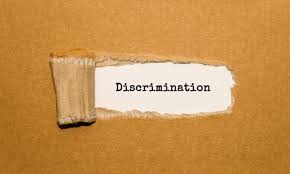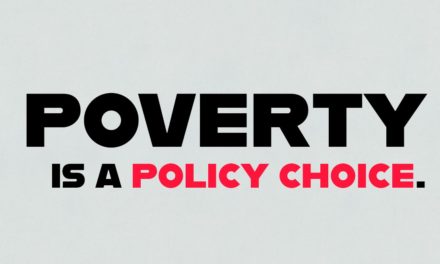This blog post from December, 2018, is published in this month’s Mark Fleischer’s excellent Storyboard Memphis newspaper
To understand the ugly face of institutional racism, we need only look to core Memphis neighborhoods where African American wealth has been systematically obstructed, limiting the opportunities and options for thousands of families.
Specifically, values of houses in majority African American neighborhoods in the Memphis MSA are 22.6% less than the same house in non-majority black neighborhoods. Put another way, the median house value in these neighborhoods is devalued by $24,299.
Considering that 46.6% of the Memphis MSA live in neighborhoods that are majority African American, the systematic attack on black wealth ripples far beyond these neighborhoods, limiting opportunity, depressing public revenues for schools and vital government services, and mocking the American Dream.
The stain on our national promise of equality is made even more disturbing because the institutional racism reflected in these comparisons resulted from intentional government-backed, racist policies – red-lining, deed restrictions, and zoning – that snared African American families into specific neighborhoods, even if they could afford to live elsewhere.
No Denying
It is a cruel chapter in American history too often overlooked in the midst of denials, particularly by those born on third base and go through life thinking they hit a triple, about the reality of white privilege that was manifested in Jim Crow laws and policies and red-lining maps drawn by the federal government that essentially prohibited banks from issuing home loans in majority black neighborhoods.
But the conversation can be denied no longer as a result of the Brookings Institution research that concludes that African Americans are $156 billion poorer because of these government policies that led to today’s devaluation of homes in majority black neighborhoods.
Meanwhile, as a result of this devaluation, governments are denied property taxes that could improve their cities’ trajectories. For example, if the devaluation affects 50,000 owner-occupied homes in Memphis, the loss in property taxes for City of Memphis is more than the total amount of property taxes that it takes in today.
Takeaways
Here are the key takeaways from the study:
* Homes in neighborhoods where the population is 50% African American are valued at roughly half the price of homes in neighborhoods with no black residents.
* Homes in African American neighborhoods are on average valued 25% lower than homes in white neighborhoods, even if the homes have similar characteristics and the neighborhoods have similar amenities, crime rates, and resources.
* Children who live in neighborhoods that are heavily undervalued have less change of upward mobility (which could explain the 3% chance that a poor child in Memphis has in moving from the bottom 20% to the top 20%).
The results of this disparity play out in the way that public services are underfunded and cumulative city-county taxes are high. As we have written before, the difference in the Memphis and Nashville property tax rate is not the result of magical management but simple math. If houses in Memphis had the same value as those in Nashville, the tax rate in Memphis would mirror Nashville.
Dominoes
It’s worth pointing out that in the list of the 10 cities with the least devaluation in African American neighborhoods, the Nashville MSA is #2, which plays out directly in its lower tax rate and greater public funding for parks, riverfront projects, and other quality of life investments.
The reality of devaluation becomes especially cruel in a city like Memphis with one of the highest child poverty rates in the U.S. at 39%. “There is a positive correlation between the valuation of properties in black neighborhoods and upward mobility of black children whose parents had incomes at the 25th percent of the national income distribution,” the study said. “In other words, black children born to low-income families had higher income as adults if they grew up in a metro area that valued black property closer to its observable market characteristics.”
With less wealth in the Memphis MSA, our community ends up with less money to educate and train our population which inhibits the city’s ability to compete for jobs that pay more and require better skills. Lower levels of education also lead to more poverty, and because socioeconomic factors influence crime rates, it leads to generalizations about African American violence. Less wealth inhibits the growth of African American businesses because potential entrepreneurs are denied the resources that can come from bank loans using homes as collateral.
In other words, turning over the domino of home devaluation leads to many other dominoes turning over as well.
The Intangible
For white people, home ownership has been the foundation on which mobility, wealth accumulation, and economic opportunity have been built, but what the Brookings study proves is that the chief reason for higher home value is whether the house is found in a “white neighborhood.”
And yet, the value of home ownership is not just found in the tangible. It is also reflected in the intangible because owning a home is also connected to perceptions of black people and as Brookings Institution pointed out, these negative perceptions persist and continue to drive policies in crime, economic development, and education.
It also influences why the Memphis MSA is near the top of the list for U.S. cities with the greatest economic segregation, as we wrote a few months ago.
As the report said: “There is strong evidence that bias has tangible effects on real estate markets, both historically and today. During the 20th century, both explicit government institutions and decentralized political actions created and sustained racially segregated housing conditions in the United States. This has created what has been dubbed a ‘segregation tax,’ resulting in lower property values for black compared to whites per dollar of income.”
“So how does the concentration of blackness impact demand among all buyers – whether from the community or not? Income and education certainly matter, but how much of the demand that impacts housing price is affected by how people around it are perceived? In other words, what is the cost of racial bias?”
The answer is obvious: Considerable.
**
Note: The report incorporated home values, neighborhood demographics, and structural characteristics from the American Community Survey; school quality and access to stores, restaurants, and other goods and service providers from Census Bureau’s County business Patterns database; walkability from the EPA’s National Walkability Index; and income mobility of African American children by Chetty, Hendren, Jones, and Porter.
**
**
Join us at the Smart City Memphis Facebook page for daily articles, reports, and commentaries relevant to Memphis.







So this is saying that, all things being equal, the market clearing price on a home in a predominantly black neighborhood is dramatically lower than in a white neighborhood.
What do I do with this information? If this is about how the free market values these properties, how do we rebalance things? Do we:
– Create policies to incentivize more affluent people to buy homes in predominantly black neighborhoods (and thus improve demand and drive up market value)?
– Increase the supply of housing in more affluent areas to pull down their property values?
– Focus on creating a thriving economy (similar to Nashville) so that the size of the pie increases and, if managed appropriately, that expansion will be equitably distributed across the MSA?
How do we solve / fix / address this in Memphis?
We have to acknowledge the disparity to address the structural racism behind the problem. It’s not just market forces – it’s the systemic devaluation of black neighborhoods and the lack of the investments needed to come closer to balancing values in a fair way. It’s also about policing the system that works to strip value out of the neighborhoods – predatory lending, foreclosures, and highly leveraged loans. And because everything in a city is connected, we have to get serious about closing the income inequity gap to increase the disparity between white and black home ownership.
Agree that there’s good in acknowledging the problem exists but I’m always trying to figure out the “so what” or the “what do I do”. That said, any conversation about value (or devaluation) is about market forces…value is determined by what the market is willing to pay.
Now, we could say that there has been a lack of investment and structural barriers placed in the way of black neighborhoods and that’s fair. But the study seems to be saying that if all things are equal (access to parks, crime rate, schools, etc) Black neighborhoods are 25% less valuable. This to me feels less like a structural / governmental issue (which exists but this study controlled for). Instead, it suggests that lines we have drawn to keep ourselves separate are, in fact, more harmful to black communities.
Now this may be because all trade between the two groups is fairly unidirectional (a dollar stays in the black community for six hours but 23 days 22 days for the white community). It may be because our mental model for neighborhood integration is based on 1970s thinking (which may or may not hold true). It may be because we’re so focused on stopping gentrification that we’ve missed the opposite (poverty concentration). Or it may be because black and white communities in this city are so focused on “winning” against the other that we’ve sub-optimized our economy and ability to equitable distribute resources because of fear of malicious intent by the other group.
I agree you need to police (and stop) efforts to descriminantly strip value from any neighborhood, community, or group of people in a targeted manner. I just didn’t read that as the focus of the study.